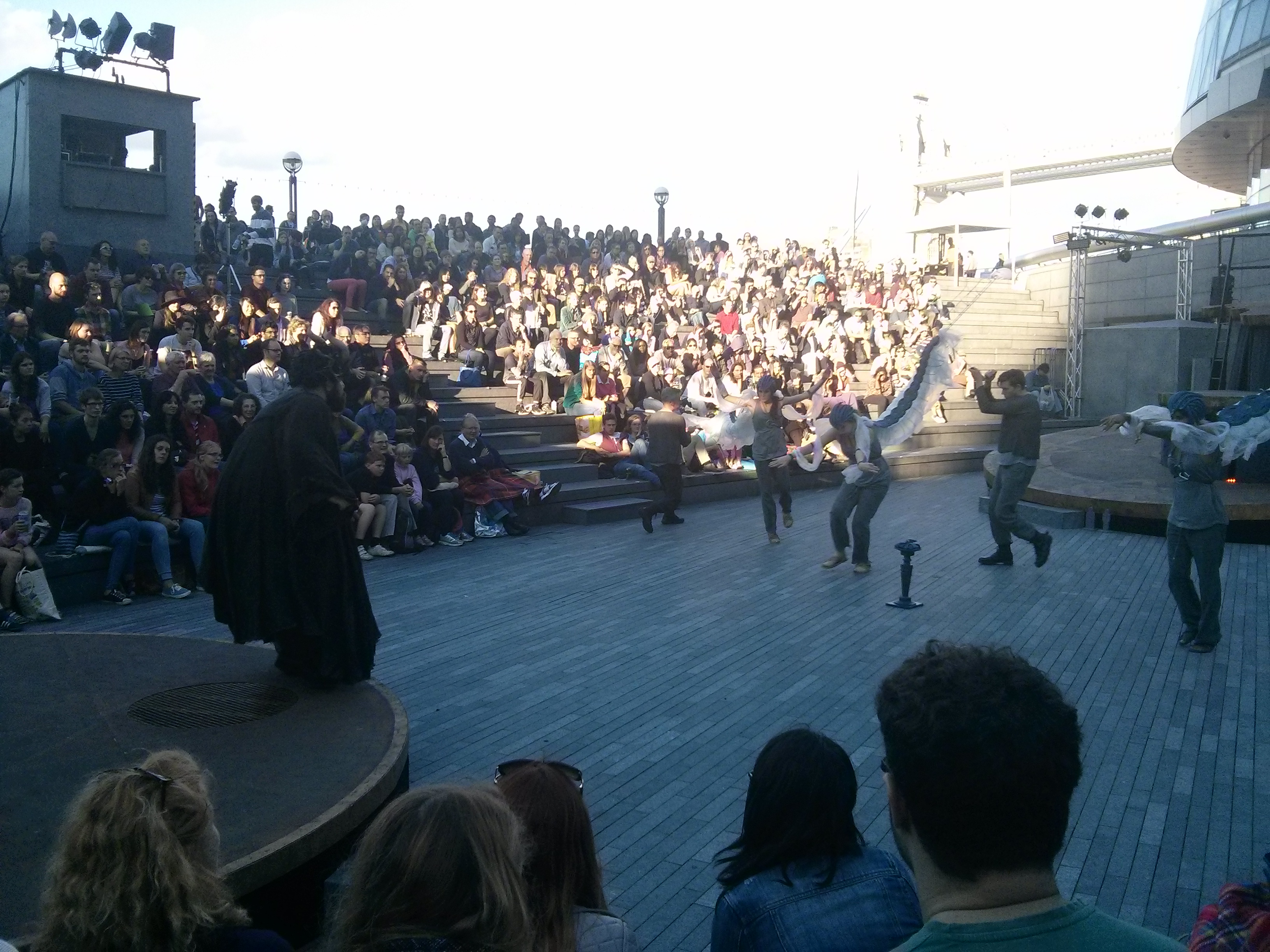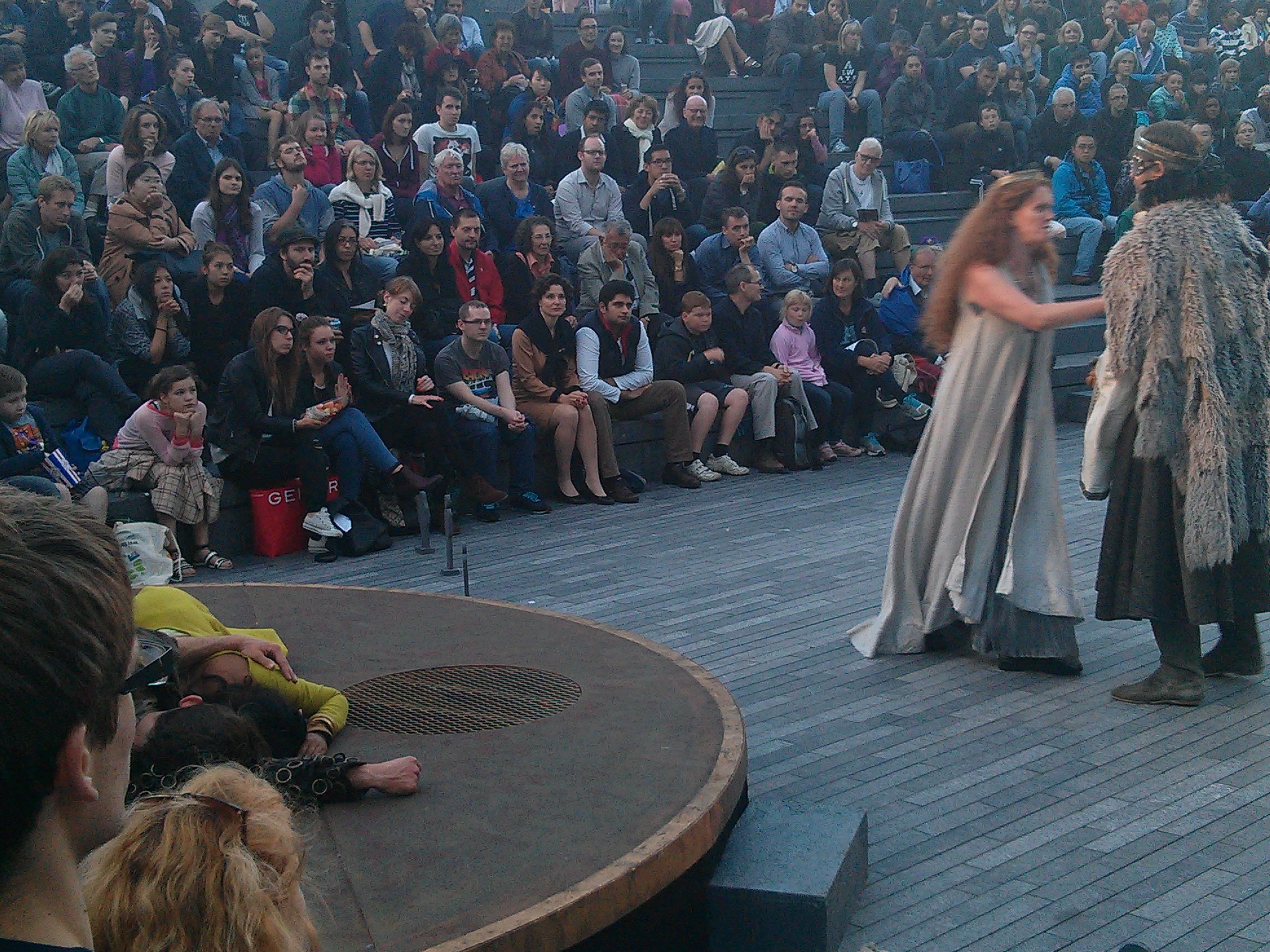The Ring Cycle and the Power of Storytelling
It amazes me how enduring good stories are. In marketing, we have only recently  started to put this concept into good practice. A magical ring, the gods, mythological creatures, power, destruction and love. What do they remind you of? What comes across your mind when reading these elements?
started to put this concept into good practice. A magical ring, the gods, mythological creatures, power, destruction and love. What do they remind you of? What comes across your mind when reading these elements?
I first thought, The Lord of the Rings. But, Richard Wagner had previously talked about all this in his Ring Cycle series of operas a hundred years before. I thoroughly enjoyed the play adapted by Lisa Kuma and directed Phil Willmott which they staged during August. They summarised about 20 hours in four 50-minutes acts and also tried to make them accessible for everyone from nine years-old. OK, some things might have been a little hard for parents to explain… Think soap operas.
Here’s the best bit: they were for free as part of the More London Festival in the small amphitheatre space near Tower Bridge. Hopefully the pictures below give you an idea of what I saw. I apologise in advance for their quality, as I had to take them with my mobile phone.

Well, no. The best bit is that the whole production was really well staged. The Scoop’s resident company, Gods and Monsters Theatre Ltd are not amateurs. In fact, they have been nominated for an award. Free doesn’t always equal bad, and this is is something that still amazes me of many events that take place in London.
Here’s the worst bit. The actors were not benefitting from ticket sales for their hard work.
The four acts were called The Rhine Gold, The Valkyrie, Siegfried and Twilight of the Gods. No need for Wagner’s music in case you were wondering. Lisa Kuma’s adaptation focused only on the story which mixed both Viking and Greek mythologies, and which had all of the elements that may interest all Game of Thrones and mythology fans.
The king and queen of the gods need to make sure that no one misbehaves.

But, even themselves experience the fatal power of a ring stolen from the Rhine mermaids and which brings wealth and missery to whoever has it. It also signals the demise of the old regime of the gods.
The brother giants’ greed makes them kidnap one of the goddess’ sister. The ring makes one of them kills his brother.

Trolls are nasty creatures. They try to gain power in various ways – by trying to get the ring, a mask. They also cheat their way to get brainless but hot Sigfried to marry the hopelessly in love troll princess to gain power in the third and fourth acts.

Wotan, the King of gods, creates the Valkirye and Valhalla to help him perform his duties. His favourite daughter leads them.

Here’s when Shakespeare’s King Lear comes across my mind. One of the many Wotan’s sons, a hero, finds love in a woman who turns out to be his own sister. The queen of gods has to intervene to ensure that the sactity of marriage is preserved, as she’s also married. This is regardless of the fact that she suffers from domestic violence.

The hero must die in battle with her husband, but Brunhilde the Valkirye cannot kill her baby nephew’s father. Wotan ensures the sad end, and she is shamed and disciplined most cruelly. He later repents, but his daughter has already decided that the old regime must die.

As his mother died, a troll looks after Sigfried her nephew. He later kills the creature after learning that he intends to take advantage of him.

The muppets created by Charlie Hoare alert brainless Sigfried about the trolls, etc.

Sigfried is tricked into marrying the troll princess while Brunhilde is waiting to be saved by Sigfried, who is destined to be her husband. The prince troll tries to save her instead and force her into marrying him. It doesn’t happen in the end, and both broken-hearted siblings turn against their father.

The end of the old regime of the gods is nigh.

I really hope that the company wins that award!
A Londoner from Afar

Comments
The Ring Cycle and the Power of Storytelling — No Comments
HTML tags allowed in your comment: <a href="" title=""> <abbr title=""> <acronym title=""> <b> <blockquote cite=""> <cite> <code> <del datetime=""> <em> <i> <q cite=""> <s> <strike> <strong>